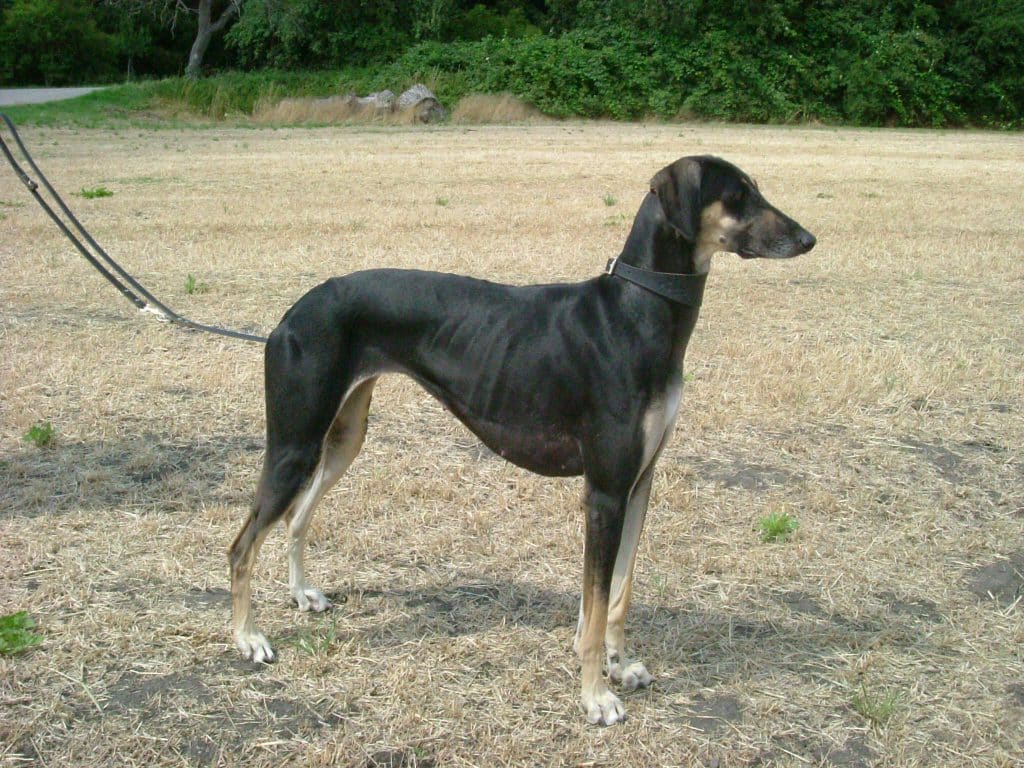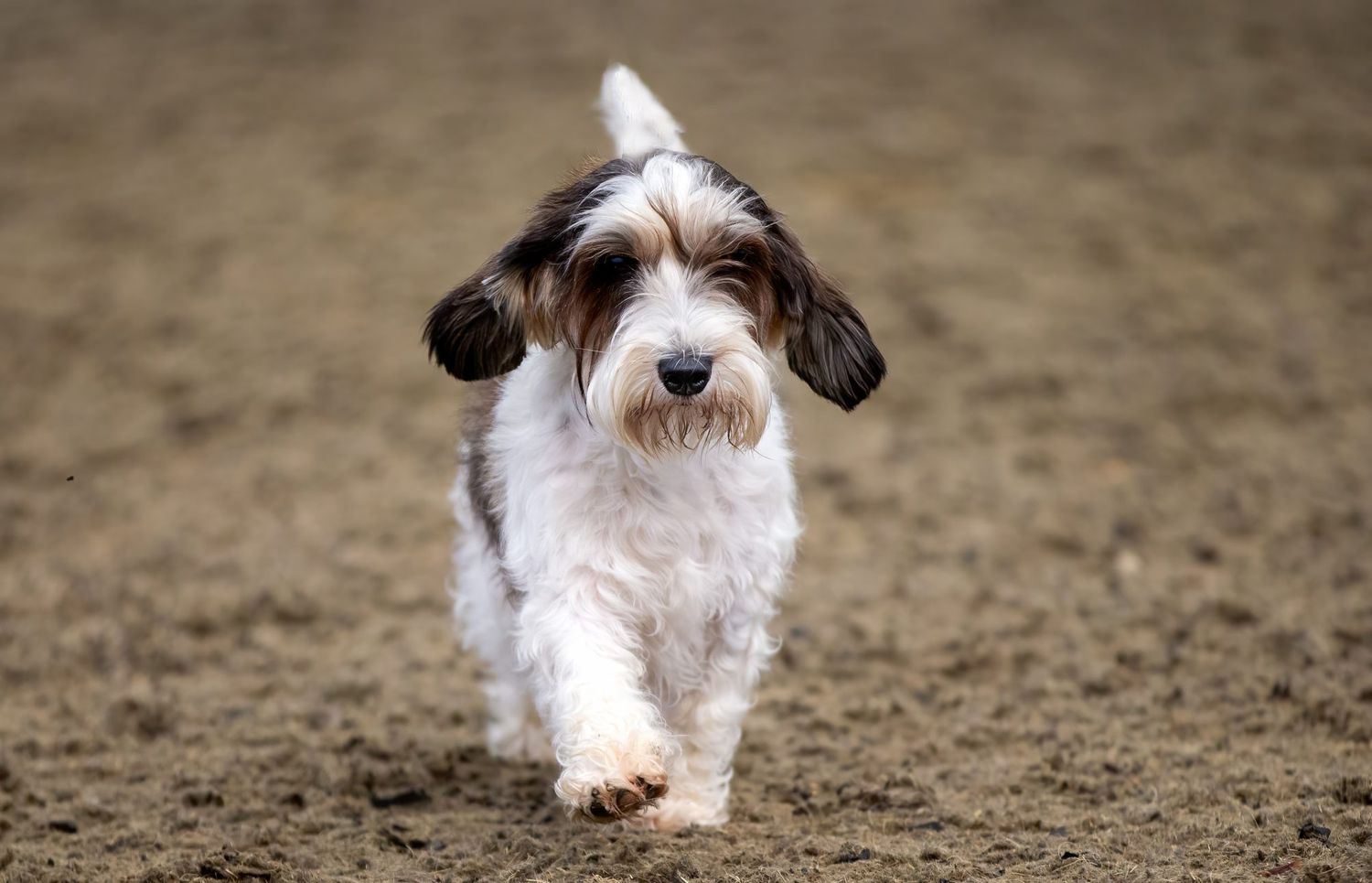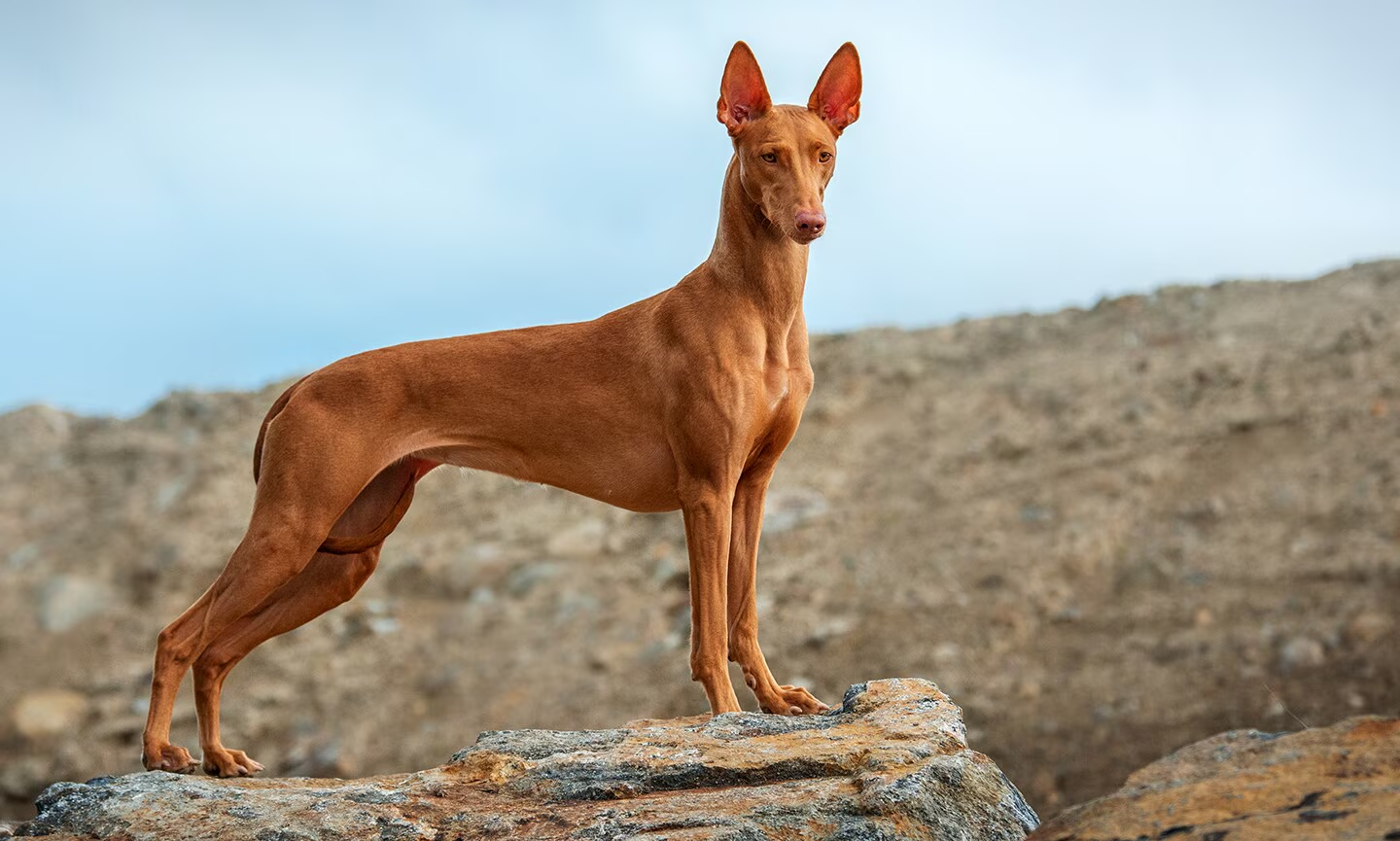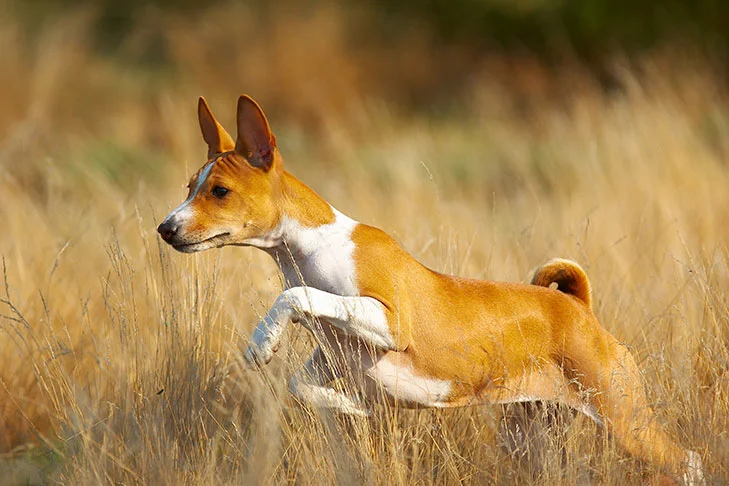My First Encounter with the Mysterious Sloughi
The first time I saw a Sloughi in person was at a rare breed dog show in Arizona. I was immediately struck by the elegant silhouette that seemed to embody both strength and delicacy simultaneously. With its long, graceful limbs, lean muscular build, and soulful, almost melancholy expression, this dog had a presence unlike any breed I’d encountered before. It moved with such effortless grace that it appeared to float rather than walk, and there was something in its quiet dignity that spoke of ancient heritage and desert winds.
The owner noticed my fascination and invited me to meet her Sloughi, a beautiful female named Sahara. “They’re often called the Arabian Greyhound,” she explained, “but they’re actually one of the oldest sighthound breeds in the world, used by nomadic tribes in North Africa for thousands of years.” As I gently stroked Sahara’s sleek coat, I was struck by the dog’s reserved but observant demeanor. Unlike many breeds that seek attention enthusiastically, this Sloughi accepted my touch with gentle tolerance while maintaining a certain aloof dignity. “They don’t give their trust easily,” the owner said, “but once they consider you family, you’ll never find a more loyal companion.”
If you’ve never heard of Sloughis or have only glimpsed them in photos, you’re missing the full impact of these extraordinary desert hounds. With their ancient North African lineage, distinctive appearance, and unique temperament, they represent one of the most fascinating yet least-known treasures of the canine world.
Whether you’re considering adding one of these elegant sighthounds to your family, fascinated by their incredible history, or simply curious about distinctive dog breeds, I’ve put together the ultimate guide to Sloughis. From their ancient origins in the Maghreb region of North Africa to what they’re actually like as companions (spoiler alert: they’re amazing but not for everyone!), we’ll cover everything you need to know about these remarkable desert hounds. So grab your favorite beverage, get comfortable, and let’s explore the wonderful world of Sloughis!
Ancient North African Heritage: The Desert-Forged History of Sloughis
To truly understand what makes Sloughis so special, we need to appreciate their extraordinary heritage, which stretches back thousands of years and has shaped every aspect of these remarkable animals.
Origins in North Africa’s Maghreb Region
The Sloughi (pronounced “SLOO-ghee”) is one of the world’s oldest known dog breeds, with origins dating back at least 7,000-8,000 years in what is now Morocco, Algeria, Tunisia, and Libya – the region known as the Maghreb. Archaeological evidence, including ancient rock art and tomb paintings, depicts sighthound-type dogs remarkably similar to modern Sloughis, confirming their ancient lineage.
Unlike many modern breeds created through deliberate crossing for specific traits, the Sloughi developed naturally over millennia, shaped by the harsh desert environment and the needs of the nomadic Berber and Bedouin tribes who relied on them. These dogs were highly valued possessions, considered treasures of the tribe and often treated as family members rather than mere hunting animals.
The name “Sloughi” is believed to derive from the Berber word “Sluki,” meaning “greyhound” or “hunting dog.” In their homeland, they’re often called “Sloughi Arabi” (Arabian Sloughi) or “Sloughi Moghrebi” (Moroccan Sloughi) to distinguish them from other sighthound types in the region.
The Desert Hunter and Noble Companion
In their traditional role, Sloughis served primarily as hunting companions, using their exceptional speed, stamina, and eyesight to pursue and capture game like hares, foxes, jackals, and gazelles across the vast desert landscapes. Their hunting style involved working closely with human hunters, often at great distances, requiring both independence and a strong bond with their owners.
Beyond their hunting abilities, Sloughis held significant cultural importance. They were symbols of nobility and status, often owned exclusively by tribal chiefs and nobility. According to tradition, Sloughis were the only dogs allowed to ride on camels alongside their masters and sleep in the family tents. They were adorned with silver jewelry and treated with a level of respect rarely afforded to animals in that time and region.
The deep cultural significance of the Sloughi is reflected in the Bedouin saying: “A man without a Sloughi is like a house without a roof.” This speaks to how integral these dogs were to both survival and social standing within traditional North African societies.
Journey to the Western World
Despite their ancient heritage, Sloughis remained largely unknown outside North Africa until the late 19th and early 20th centuries. French colonization of North Africa brought Europeans into contact with the breed, and some military officers and colonial administrators began bringing Sloughis back to Europe.
World Wars I and II severely impacted the breed’s numbers both in Europe and North Africa. In their homeland, changing lifestyles and the decline of traditional hunting further threatened their existence. By the mid-20th century, pure Sloughis had become rare even in their countries of origin.
Dedicated preservation efforts began in the 1960s and 1970s, with breed enthusiasts traveling to North Africa to find and document remaining purebred specimens. The Sloughi was recognized by the Fédération Cynologique Internationale (FCI) in 1934, but American recognition came much later – the United Kennel Club recognized the breed in 1995, followed by the American Kennel Club in 2016.
Today, the Sloughi remains a rare breed globally, with relatively small populations even in its native North Africa. This rarity has helped maintain its distinctive characteristics and ancient temperament, preserving a living connection to the nomadic cultures that shaped it over thousands of years.
The Sloughi Look: Desert-Adapted Elegance
The Sloughi’s appearance is a perfect example of form following function – every aspect of their distinctive look developed to facilitate survival and hunting prowess in the harsh desert environment of North Africa.
Size and Structure
Sloughis are medium to large sighthounds with a distinctly elegant build that combines strength with incredible agility. Males typically stand 26-29 inches at the shoulder and weigh between 55-65 pounds, while females are 24-27 inches and 35-50 pounds. Despite their relatively light weight, they give an impression of substantial strength and durability.
Their overall silhouette is one of refined curves and flowing lines. Key physical characteristics include:
- A long, narrow head with a slightly domed skull and drop ears
- Dark, expressive almond-shaped eyes with an often melancholy or soulful expression
- A long, graceful neck flowing into sloping shoulders
- A deep chest that provides ample lung capacity for endurance running
- A dramatically tucked waist with visible (but not prominent) hip bones
- Long, lean limbs with excellent bone structure
- A low-set tail that tapers to a point, typically carried low with a slight upward curve at the end
The Sloughi’s movement is perhaps its most captivating feature – a smooth, effortless gait with tremendous reach and drive that showcases their natural athleticism. When running at full speed, they can reach up to 40-45 miles per hour in short bursts, covering ground with breathtaking efficiency and grace.
Coat and Colors
The Sloughi’s coat is one of its most distinctive features – short, fine, and lying close to the body without feathering or fringe. This practical coat served a crucial purpose in their desert homeland, providing just enough protection from sun and sand while allowing for efficient cooling in high temperatures.
The breed standard recognizes several colors:
- Various shades of light sand (cream) to red-sand (mahogany)
- Brindle (dark stripes on a lighter base color)
- Black overlay (black hairs mixed throughout the coat, creating a darker appearance)
- Black mask on the muzzle (common in many individuals)
White markings are permitted only as a small patch on the chest or as minimal white on the toes. Unlike some sighthound breeds, Sloughis are never particolored (having large patches of different colors).
The coat’s texture is another adaptation to desert life – slightly rough to the touch rather than silky, providing better protection against harsh elements. Grooming is remarkably simple, as Sloughis are naturally clean dogs with minimal shedding. Weekly brushing with a soft brush or grooming mitt is usually sufficient to remove loose hair and distribute skin oils.
Personality & Temperament: The Reserved Desert Noble
Beyond their striking appearance, what truly makes Sloughis special is their unique temperament – a complex blend of traits shaped by thousands of years as the treasured hunting companions of nomadic tribes.
The Loyal Yet Independent Spirit
Perhaps the most defining characteristic of Sloughi temperament is their combination of deep loyalty with natural reserve and independence. These dogs form profound bonds with their chosen people but express this attachment differently than more demonstrative breeds.
With their family, Sloughis are typically devoted and affectionate, though in a quiet, dignified way. They often follow their favorite people from room to room and prefer to be where their humans are. Many enjoy gentle physical contact, leaning against their owners or resting a head in a lap, but they’re rarely demanding of attention.
This loyalty coexists with a marked independence that stems from their heritage as hunting dogs who needed to make quick decisions while pursuing prey, often at great distances from their handlers. Modern Sloughis maintain this self-reliance, approaching problems with intelligent assessment rather than looking to humans for constant direction.
Their reserved nature extends to interactions with strangers. Most Sloughis are politely aloof with unfamiliar people, neither fearful nor immediately friendly. They typically take time to warm up to new individuals, observing carefully before deciding to accept someone into their circle. This careful assessment of strangers served an important protective function in their traditional role.
Sensitivity and Intelligence
Another key aspect of Sloughi temperament is their remarkable sensitivity. These dogs are finely attuned to the emotions and energy of their people and environment. Harsh words, tension, or conflict can deeply affect a Sloughi, sometimes causing them to withdraw or become anxious.
This sensitivity pairs with a quiet intelligence that often surprises owners. Sloughis are thoughtful dogs who consider situations before reacting, rather than responding impulsively. They learn quickly but may choose whether to comply based on their own assessment of a situation – a trait that can be misinterpreted as stubbornness but is actually a form of independent thinking.
Training approaches that respect this sensitivity and intelligence are most effective. Sloughis respond poorly to harsh corrections or forceful methods but flourish with gentle guidance and positive reinforcement. Their natural dignity should be respected throughout training and daily life – these are dogs that respond to being treated as respected partners rather than subordinates.
The Home Environment
In the home, most Sloughis are calm, quiet companions with surprisingly minimal exercise needs for a sighthound. While they require regular opportunities to run safely in enclosed areas, they typically spend much of their time contentedly lounging – a trait that reflects their desert heritage where conserving energy was important for survival.
Many Sloughi owners describe their dogs as nearly silent in the house, rarely barking without good reason. They’re naturally clean, with minimal “dog odor,” and many display almost cat-like attention to personal grooming. These traits made them ideal tent companions for their nomadic masters and translate well to modern home life.
While generally peaceful with other animals they’re raised with, Sloughis maintain a strong prey drive that can trigger pursuit of small, fast-moving creatures. This instinct varies in intensity between individuals but should always be managed carefully, particularly around unfamiliar small animals.
Living With a Sloughi: Practical Considerations
Beyond their history and personality, what’s it actually like to share your home with a Sloughi? There are some unique considerations that potential owners should understand before bringing one of these special dogs home.
Exercise and Space Needs
Despite their athletic capabilities, adult Sloughis typically have moderate exercise needs compared to some high-energy breeds. They generally thrive with a balance of:
- Daily walks (30-60 minutes total)
- Opportunities to run freely in a securely fenced area 2-3 times weekly
- Mental stimulation through training, puzzle toys, or interactive play
Their exercise pattern tends to mirror their desert heritage – short bursts of intense activity followed by long periods of rest. This makes them more adaptable to various living situations than one might expect for a hunting breed, provided their basic needs are met consistently.
The emphasis on “securely fenced” for running cannot be overstated. Sloughis are sighthounds with strong prey drive and can reach speeds of 40+ mph in seconds if they spot something interesting to chase. For safety, they should only be allowed off-leash in fully enclosed areas, regardless of how well-trained they seem. A fence at least 6 feet high is recommended, as Sloughis can be impressive jumpers when motivated.
While they need space to run, many Sloughis adapt surprisingly well to apartment or urban living if given adequate exercise and mental stimulation. They’re generally quiet indoors and spend much of their time resting, making them less disruptive than many more active breeds.
Climate Considerations
Sloughis were developed in the hot, arid climate of North Africa, and their physical adaptations reflect this heritage. They typically handle heat well compared to many breeds, with their efficient cooling system and minimal body fat helping them remain comfortable in warm temperatures.
Conversely, they have very little natural protection against cold weather. Their short coat and minimal body fat make them sensitive to chilly conditions, requiring protection in cold climates. Most Sloughis need sweaters or coats for comfortable walks in winter weather, and they appreciate warm bedding year-round. Many develop a special appreciation for sunny spots in the house where they can bask in natural warmth.
Training Approaches
Training a Sloughi requires understanding their unique mindset and using approaches that work with, rather than against, their natural tendencies. Effective Sloughi training typically involves:
- Gentle, positive reinforcement methods that respect their sensitivity
- Consistency and clear communication about expectations
- Short, engaging sessions that prevent boredom
- Patience and acceptance of their independent nature
- Early socialization to build confidence and appropriate responses
Many Sloughis excel in activities that engage their natural abilities, including lure coursing, racing, agility, and tracking. These sports provide both physical exercise and mental stimulation while building the bond between dog and owner.
It’s worth noting that while Sloughis can learn basic obedience and house manners beautifully, they may never achieve the eager compliance seen in breeds specifically developed for trainability. Their independent assessment of situations is a feature of their character rather than a training failure, and living successfully with a Sloughi means appreciating this aspect of their nature.
Health and Care: Supporting Your Sloughi
One advantage of ancient breeds like the Sloughi is their generally good health. As a breed that developed naturally through practical selection for hunting ability and survival in harsh conditions, they’ve avoided many of the genetic health problems that plague some more heavily manipulated breeds.
Common Health Considerations
Sloughis are generally healthy dogs with a typical lifespan of 12-16 years. Their natural development has created a robust breed, but there are some health issues that appear with some frequency:
- Progressive Retinal Atrophy (PRA): An inherited eye condition that can lead to blindness
- Sensitivity to anesthesia and certain medications: Like many sighthounds, Sloughis metabolize drugs differently due to their low body fat
- Cardiac issues: Various heart conditions appear occasionally in the breed
- Autoimmune disorders: Including Addison’s disease and thyroid issues
- Osteosarcoma (bone cancer): Though less common than in some large breeds
Working with a reputable breeder who conducts appropriate health testing can reduce the risk of these conditions. Regular veterinary care, including annual check-ups, is essential for monitoring health and detecting any issues early.
When seeking veterinary care, it’s important to find a professional with experience treating sighthounds or who is willing to research the unique physiological characteristics of these breeds, particularly regarding anesthesia protocols and medication dosing.
Nutrition and Feeding
Sloughis typically thrive on high-quality commercial dog foods formulated for active breeds or sighthounds. Many owners prefer foods with moderate protein levels and adequate fat content to maintain proper muscle tone and energy without excess weight gain.
Due to their deep chest structure, Sloughis can be at risk for bloat (gastric dilatation-volvulus), a potentially life-threatening condition. To minimize this risk, many owners:
- Feed multiple smaller meals rather than one large daily feeding
- Avoid exercise for an hour before and after meals
- Use elevated feeding stations to reduce air swallowing
- Consider discussing preventive gastropexy (surgical stomach tacking) with their veterinarian
Like many sighthounds, Sloughis should maintain a lean body condition with ribs and hip bones somewhat visible. This natural leanness supports their athletic structure and cardiovascular health, though it may appear too thin to those accustomed to more heavily built breeds.
Is a Sloughi Right for You? Honest Assessment
After learning all about these elegant desert sighthounds, you might be wondering if a Sloughi would fit well in your lifestyle. Let’s take an honest look at who should (and perhaps shouldn’t) consider this breed.
You Might Be a Great Sloughi Owner If…
A Sloughi might be right for you if:
- You appreciate a loyal yet independent dog with a reserved, dignified nature
- You understand and respect the unique psychology of sighthounds
- You can provide secure, safe areas for running and exercise
- You enjoy a generally quiet, clean dog with minimal barking
- You’re patient with training and accept that perfect obedience may not be achievable
- You value the preservation of an ancient, rare breed
- You’re willing to protect them from cold weather
- You appreciate a sensitive companion that forms deep but sometimes subtle bonds
- You’re willing to manage their prey drive appropriately
Sloughis can adapt well to various household compositions, including families with well-behaved older children who understand how to interact respectfully with dogs. They often do best in relatively calm, stable environments where their sensitivity is understood and accommodated.
A Different Breed Might Be Better If…
A Sloughi might not be the best choice if:
- You want an easily trainable dog that eagerly obeys commands
- You have small pets like cats, rabbits, or other small animals
- You don’t have secure containment for a fast, prey-driven dog
- You have very young or rough children
- You want a dog that’s friendly and outgoing with everyone it meets
- You’re away from home for extended periods regularly
- You live in a very cold climate without means to keep the dog warm
- You want a protective guard dog (while alert, most Sloughis are not aggressive)
- You’re a first-time dog owner looking for an “easy” breed
Finding Your Sloughi
If you decide a Sloughi is right for you, patience will be necessary during your search. As one of the rarest breeds in America, finding a Sloughi puppy or adult can be challenging.
The American Sloughi Association is an excellent starting point, as they can provide breeder referrals and education about the breed. Expect a thorough interview process – responsible breeders want to ensure their puppies go to homes that understand and are prepared for the unique characteristics of the breed.
Be prepared for a waiting period of months or even a year or more, as litters are infrequent and usually small. Puppies from health-tested parents typically cost between $1,500-$3,000, reflecting their rarity and the care involved in responsible breeding.
Rescue options exist but are extremely limited due to the breed’s rarity. However, occasionally adult Sloughis need rehoming due to owner circumstances rather than behavioral issues, and breed-specific rescue networks can help connect these dogs with appropriate new homes.
Conclusion: The Timeless Elegance of the Desert Noble
There’s something truly special about Sloughis. Perhaps it’s their ancient heritage – the living connection to nomadic cultures that shaped them over thousands of years. Perhaps it’s their extraordinary physical elegance – the flowing lines and graceful movement that seem almost otherworldly. Or perhaps it’s their unique temperament – the perfect balance of loyalty and independence, wrapped in a dignified reserve that feels like a link to something primal and true.
Living with a Sloughi means embracing certain compromises – the need for secure containment, management of their prey drive, acceptance of their reserved nature with strangers, and respect for their sensitivity. But for those who connect with their special spirit, these accommodations are minor compared to the joy of sharing life with such an extraordinary companion.
Sloughis aren’t for everyone, and their rarity helps ensure they generally go to homes that truly appreciate their unique qualities. But for those who connect with their desert-forged character, these elegant sighthounds offer a relationship that’s as challenging as it is rewarding – a connection to thousands of years of history wrapped in a package that combines ancient wisdom with athletic grace.
As one experienced Sloughi owner beautifully expressed it, “They’re not just dogs; they’re living history. Every day with my Sloughi feels like a privilege – a chance to experience something truly ancient and yet perfectly relevant to forming deep bonds in our modern world.” For the right person with the right expectations, truer words were never spoken.




